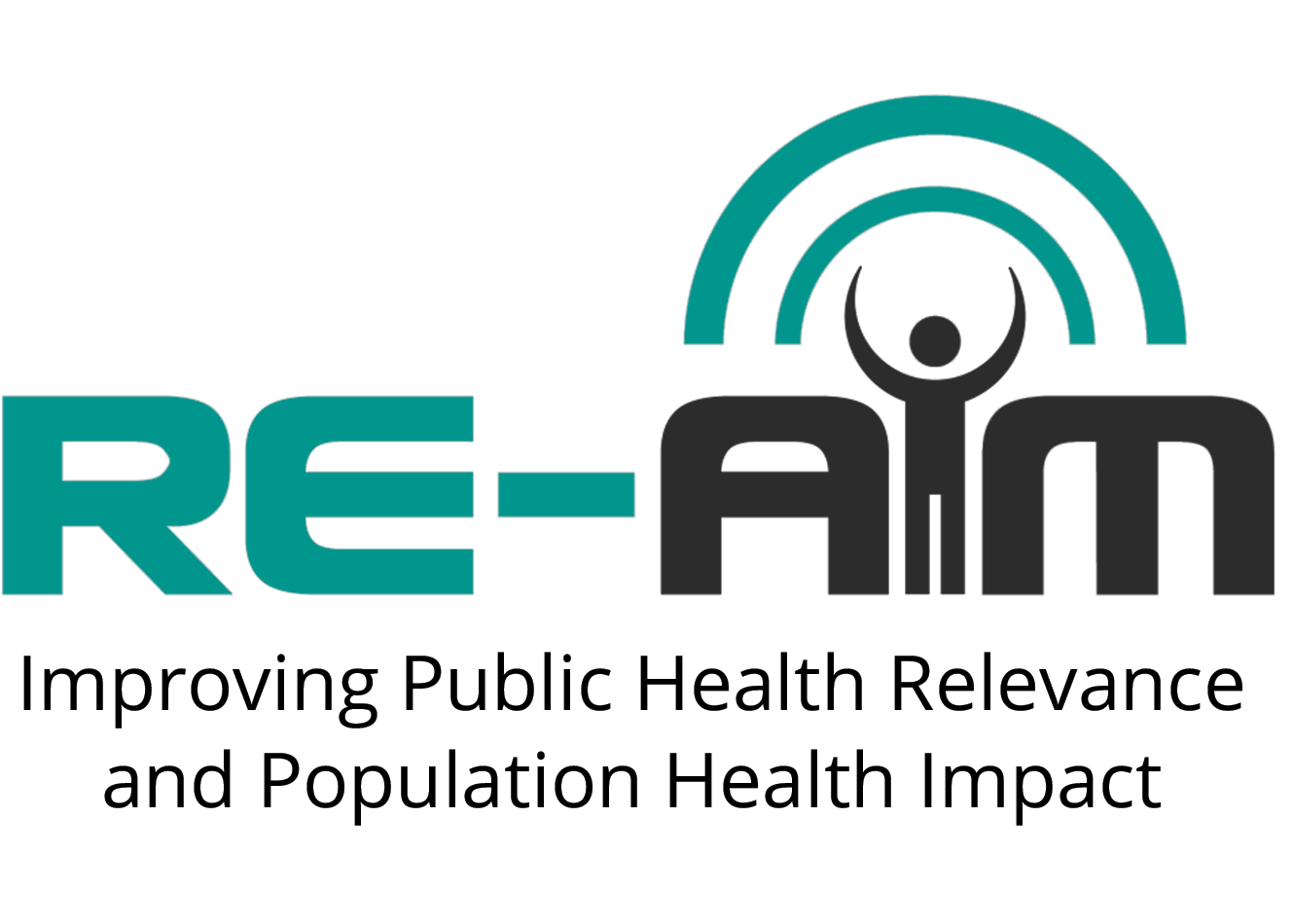Visual Displays
Some have suggested that a multiplicative model best fits the intent of the model that all five dimensions are equally important, and that if a program has a zero value on any dimension, that its overall public health impact will be zero. This builds upon the increasingly accepted notion of Reach X Efficacy = Impact to become Public Health Impact = R x E x A x I x M.
Others object to such formulas and feel that there is no one best way to combine the RE-AIM elements. One approach that allows users to define their own criteria and to emphasize the issues that are most important to them is to visually display different programs on the RE-AIM dimensions so that the strengths and limitations of different programs can be quickly seen. Examples of such visual displays can be viewed by clicking on the “example” icons below.
Sample Visual Displays
Interactive Technologies versus In-Person Counseling for Diabetes Self-Management: Comparison of RE-AIM Capabilities
This figure visually displays the relative strengths and limitations of interactive computer vs. in-person based behavior change counseling along the various RE-AIM dimensions (higher scores are better on the hypothetical scale).

Display of Two Different Intervention Programs on Various RE-AIM Dimensions
This figure visually displays the hypothetical performance of a group counseling program versus a policy approach to smoking behavior change on the various RE-AIM dimensions (higher scores are better on the hypothetical scale).

Publications using the RE-AIM Framework
Click the image to be directed to RE-AIM on PUBMED

